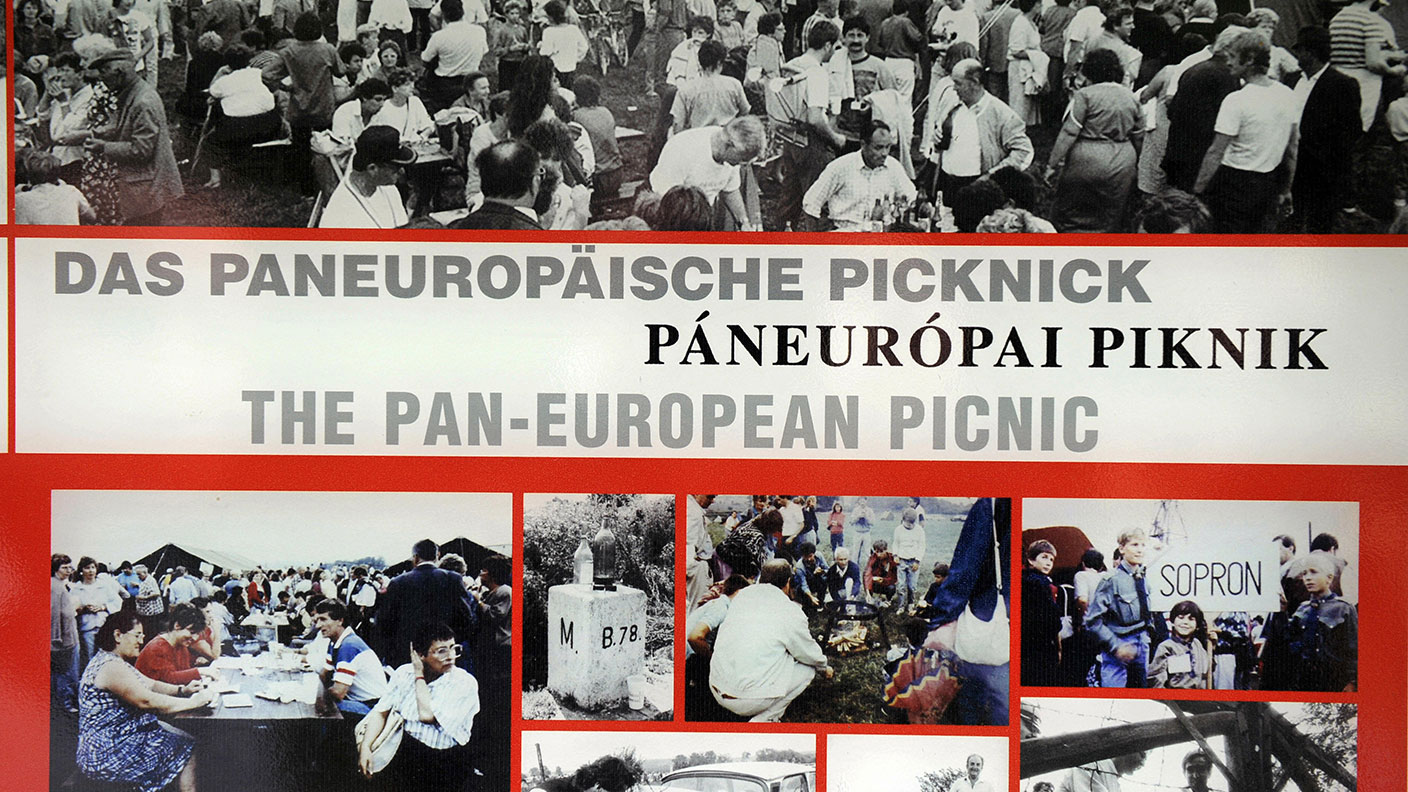19 August 1989: The Pan-European Picnic brings down the Iron Curtain
On this day in 1989 thousands of people flocked to a picnic in Hungary. Many kept going straight across the border into Austria.


Food has long been used to smash down barriers and bring people together. But the Pan-European Picnic was no sumptuous banquet between bloated heads of state. It was, as its name suggests, a picnic to bring reformed-minded people together on an August afternoon in 1989.
The air was heavy with change that summer. The communist eastern bloc still faced off against the West over the Iron Curtain – the border that separated eastern and western Europe, of which the Berlin Wall was part.
But cracks were appearing. In Hungary, the reformist government had started to issue “world passports” that made travelling easier.
MoneyWeek
Subscribe to MoneyWeek today and get your first six magazine issues absolutely FREE

Sign up to Money Morning
Don't miss the latest investment and personal finances news, market analysis, plus money-saving tips with our free twice-daily newsletter
Don't miss the latest investment and personal finances news, market analysis, plus money-saving tips with our free twice-daily newsletter
That summer, masses of East Germans travelled down to Lake Balaton in western Hungary for their holidays as they had done for decades. But this time, many weren't counting on going back. At the same time, and less than an hour's drive from the lake, opposition activists had gathered to exchange ideas.
Over in the eastern part of the country, thousands of Romanians fleeing Nicolae Ceauescu's brutal regime streamed into Debrecen. At the town's university, Otto von Habsburg, member of the European Parliament and the Paneuropean Union, gave a speech raising the idea of a Europe without borders.
The speech struck a chord. Two members of Hungary's opposition, Mária Filep and Ferenc Mészáros, suggested holding a picnic on the Austro-Hungarian border, inviting the activists at Lake Balaton. The venue for the picnic would be Sopron on the border with Austria.
Crucially, the minister of state, Imre Pozsgay, was sympathetic. The border crossing was to open for three hours during the picnic, while the unarmed guards were stood down.
In East Germany, word spread of the picnic and thousands more travelled to Hungary, despite efforts by the authorities to promote the country's 40th birthday celebrations.
On 19 August 1989, the Pan-European Picnic passed off peacefully. Hundreds of East Germans grabbed the opportunity to cross into Austria, and weeks later, Hungary opened the border for good. The Iron Curtain had been breached, and on 9 November, the Berlin Wall came down.
Get the latest financial news, insights and expert analysis from our award-winning MoneyWeek team, to help you understand what really matters when it comes to your finances.

-
 ‘Why I have ditched my Help to Buy ISA for cash savings and the stock market’
‘Why I have ditched my Help to Buy ISA for cash savings and the stock market’Without the 25% bonus, my Help to Buy ISA is effectively redundant, says MoneyWeek writer Sam Walker.
-
 Is your inheritance tax allowance cut if you sell to downsize or sell your home to pay for care?
Is your inheritance tax allowance cut if you sell to downsize or sell your home to pay for care?Downsizing relief is a little-known benefit that could save your loved ones tens of thousands of pounds in inheritance tax after you’ve died.
-
 31 August 1957: the Federation of Malaya declares independence from the UK
31 August 1957: the Federation of Malaya declares independence from the UKFeatures On this day in 1957, after ten years of preparation, the Federation of Malaya became an independent nation.
-
 13 April 1960: the first satellite navigation system is launched
13 April 1960: the first satellite navigation system is launchedFeatures On this day in 1960, Nasa sent the Transit 1B satellite into orbit to provide positioning for the US Navy’s fleet of Polaris ballistic missile submarines.
-
 9 April 1838: National Gallery opens in Trafalgar Square
9 April 1838: National Gallery opens in Trafalgar SquareFeatures On this day in 1838, William Wilkins’ new National Gallery building in Trafalgar Square opened to the public.
-
3 March 1962: British Antarctic Territory is created
Features On this day in 1962, Britain formed the British Antarctic Territory administered from the Falkland Islands.
-
10 March 2000: the dotcom bubble peaks
Features Tech mania fanned by the dawning of the internet age inflated the dotcom bubble to maximum extent, on this day in 2000.
-
9 March 1776: Adam Smith publishes 'The Wealth of Nations'
Features On this day in 1776, Adam Smith, the “father of modern economics”, published his hugely influential book The Wealth of Nations.
-
 8 March 1817: the New York Stock Exchange is formed
8 March 1817: the New York Stock Exchange is formedFeatures On this day in 1817, a group of brokers moved out of a New York coffee house to form what would become the biggest stock exchange in the world.
-
7 March 1969: Queen Elizabeth II officially opens the Victoria Line
Features On this day in 1969, Queen Elizabeth II took only her second trip on the tube to officially open the underground’s newest line – the Victoria Line.